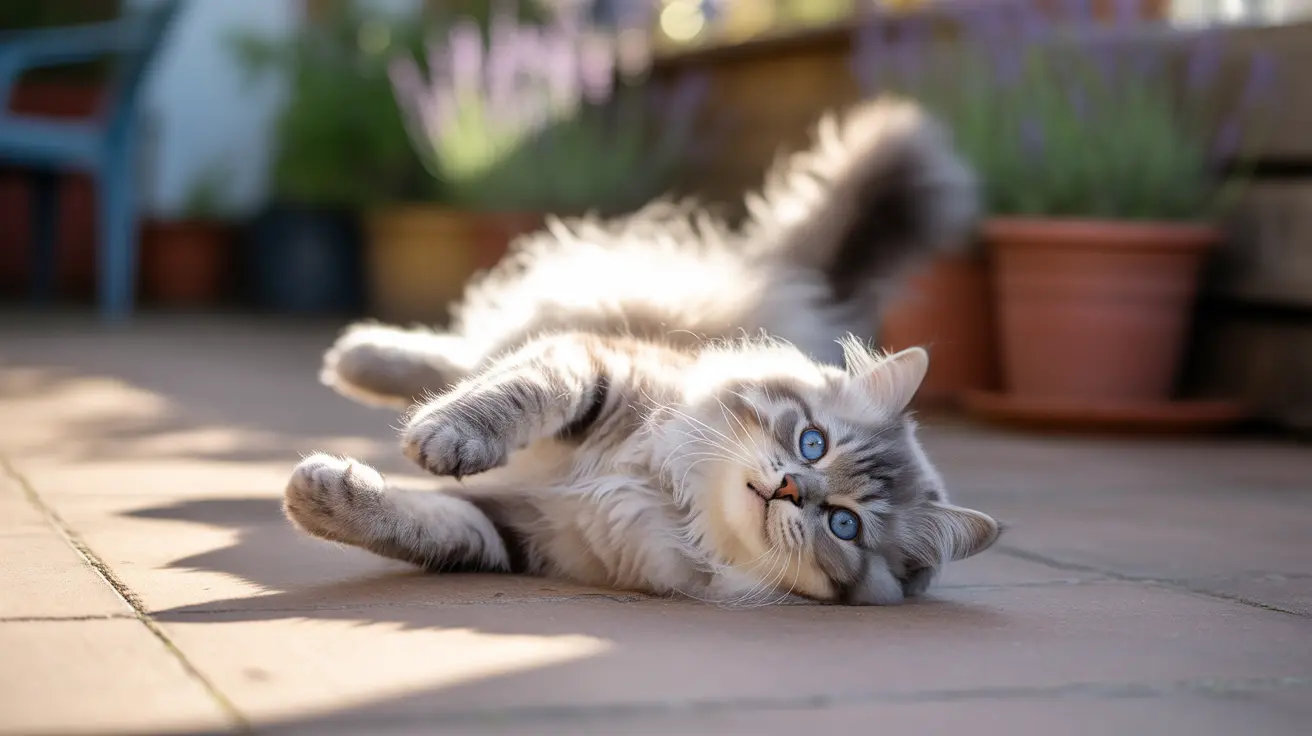If you've ever watched your cat suddenly flop onto the ground and start rolling around, especially on concrete or hard surfaces, you're witnessing a fascinating and natural feline behavior. While it might seem random or silly to us, there are actually several important reasons why cats engage in this common activity.
Understanding why cats roll around can provide valuable insights into their physical and emotional well-being, as well as their way of communicating with both humans and other cats. Let's explore the science behind this intriguing behavior and what it means for your feline friend.
The Science of Scent Marking
One of the primary reasons cats roll around is to mark their territory. Cats have special scent glands located on their cheeks, paws, and the base of their tail. When they roll on surfaces, they're actually leaving behind their unique scent signature, effectively saying "this is my space."
This scent-marking behavior is particularly noticeable on concrete and other hard surfaces because these materials retain scents well. It's a natural instinctive behavior that helps cats establish their presence in their environment.
Temperature Regulation and Comfort
Concrete and other hard surfaces often maintain different temperatures than their surroundings. During hot weather, these surfaces can provide a cool respite for your cat. Conversely, in cooler weather, sun-warmed concrete can offer a comfortable spot for warmth.
This temperature-seeking behavior is an intelligent way for cats to regulate their body temperature naturally, making concrete and similar surfaces particularly attractive for rolling.
Physical Benefits and Body Maintenance
Rolling serves several practical purposes for your cat's physical well-being. The motion helps stretch muscles, maintain flexibility, and can even assist with grooming hard-to-reach areas. The rough texture of concrete or other surfaces can provide a pleasant scratching sensation, helping to relieve itches and remove loose fur.
Self-Grooming and Parasite Control
When cats roll around, they're often engaging in a form of self-grooming. The friction created between their fur and the surface can help remove dirt, debris, and even parasites. This behavior is particularly common after meals or during regular grooming sessions.
Social and Emotional Expression
Rolling behavior often has a social component, especially when performed in the presence of humans or other cats. When your cat rolls around near you, they're likely displaying trust and contentment. This vulnerability-showing behavior is a sign that they feel safe and secure in their environment.
Attention-Seeking Behavior
Some cats learn that rolling around can effectively attract their owner's attention. If your cat frequently rolls around when you're nearby, they might be inviting interaction or playtime. However, it's important to note that exposing their belly doesn't always mean they want it touched.
Signs of Well-being
Regular rolling behavior generally indicates a happy, healthy cat. Cats typically only engage in this behavior when they feel safe and comfortable in their environment. If you notice sudden changes in your cat's rolling habits, it might be worth monitoring their overall health and behavior.
Frequently Asked Questions
Why do cats roll around on concrete and other hard surfaces?
Cats roll on concrete and hard surfaces to mark their territory with scent glands, regulate body temperature, and satisfy physical needs like stretching and grooming. The texture and temperature of these surfaces make them particularly attractive for this behavior.
How does rolling behavior help cats mark their territory with scent?
When cats roll, they transfer pheromones from scent glands located on their faces, paws, and tails onto surfaces. This creates a scent marker that communicates their presence to other cats and helps establish their territory.
Can rolling around be a sign that my cat is seeking attention or feeling playful?
Yes, cats often roll around to attract attention or initiate play, especially with their owners. This behavior can be a social invitation and a sign of trust and comfort in their environment.
Is my cat rolling to regulate its body temperature or scratch an itch?
Both! Cats use rolling behavior for multiple purposes, including temperature regulation (especially on concrete surfaces) and reaching itchy spots. The texture of various surfaces can help satisfy their scratching needs.
What does it mean when a cat exposes its belly while rolling—is it an invitation for petting?
While belly exposure during rolling indicates trust and comfort, it's not always an invitation for petting. Many cats feel vulnerable when their belly is touched and may react defensively. Always respect your cat's body language and personal space.
Understanding your cat's rolling behavior can help you better interpret their needs and ensure they have appropriate surfaces and opportunities to engage in this natural behavior. Whether they're marking territory, seeking comfort, or simply expressing joy, rolling around is a normal and healthy part of feline behavior.






